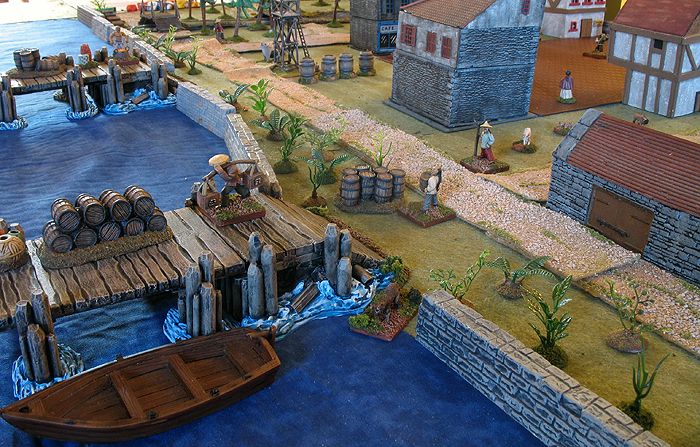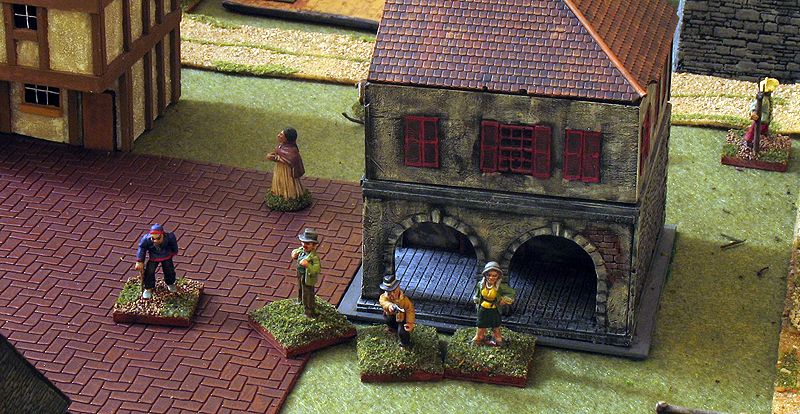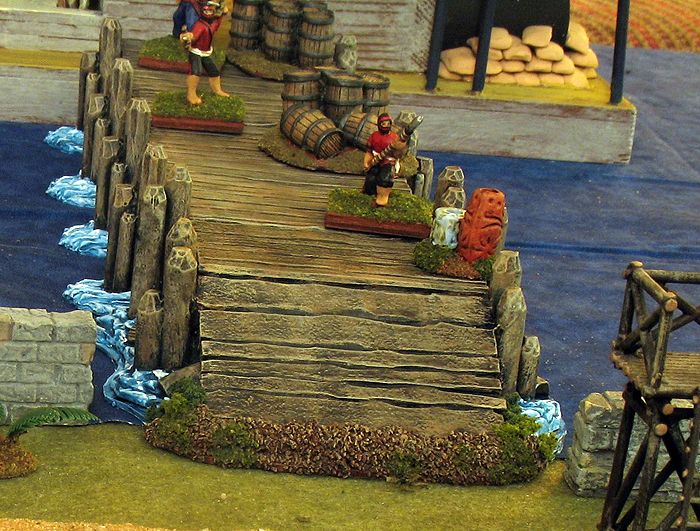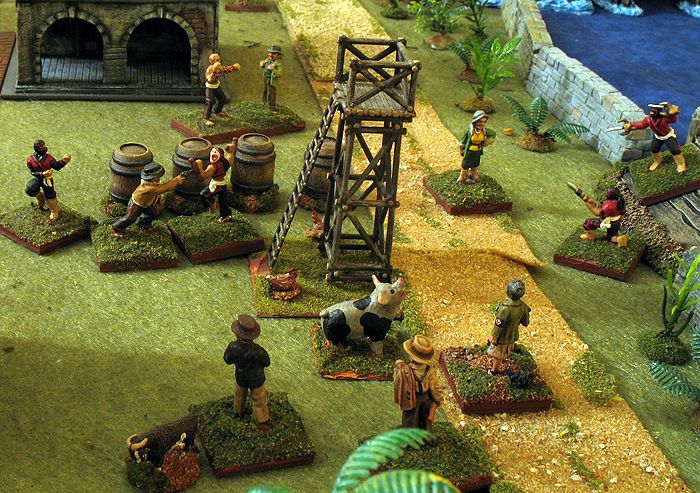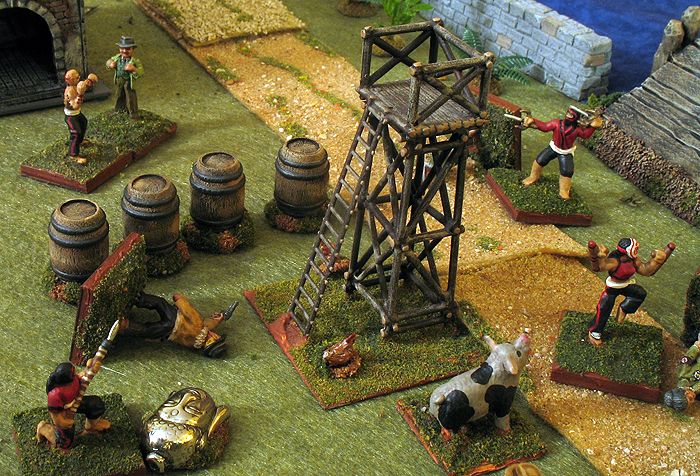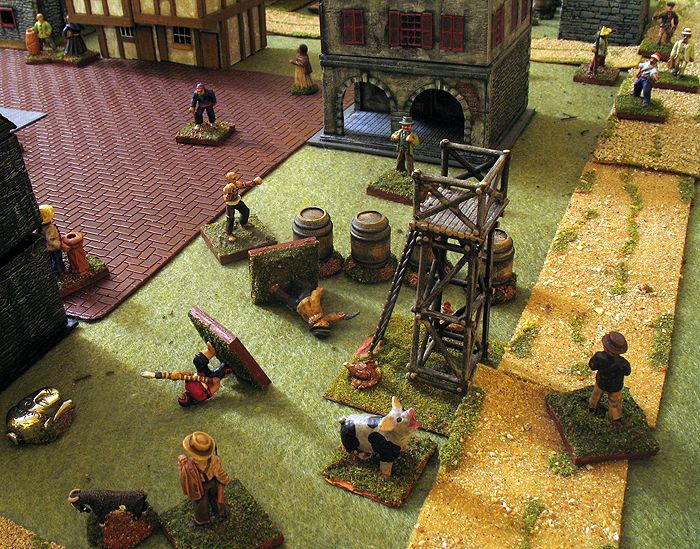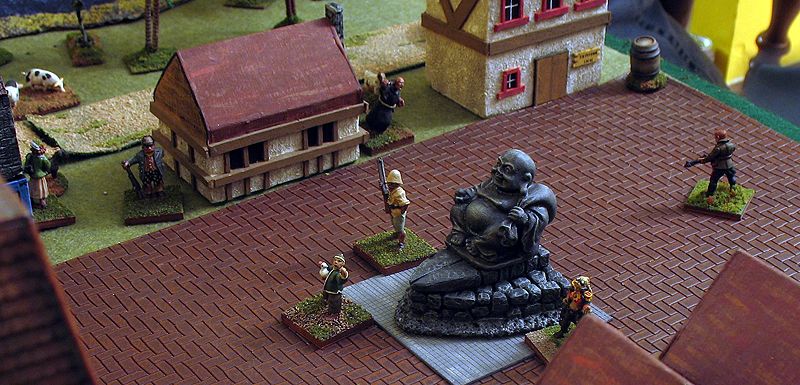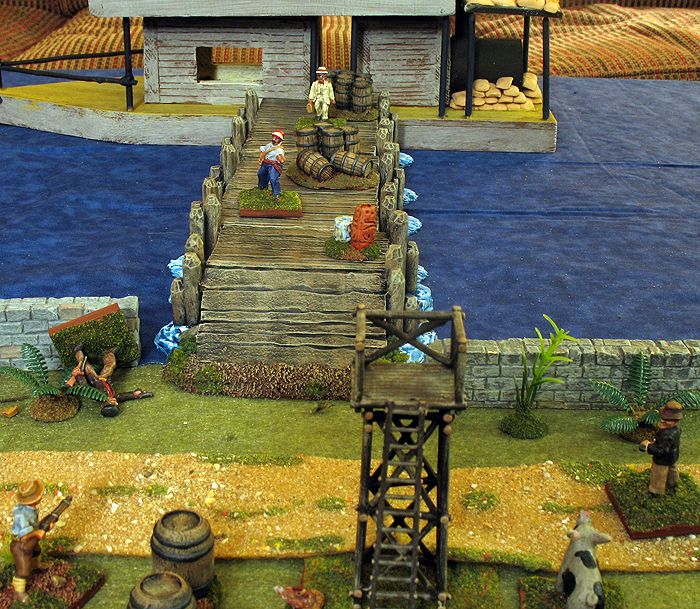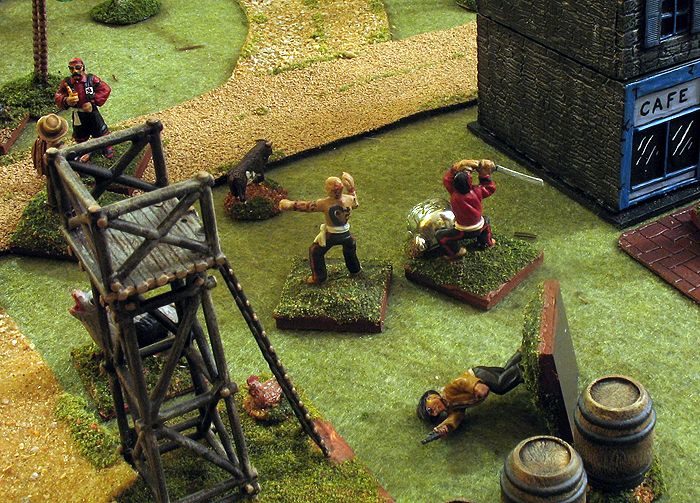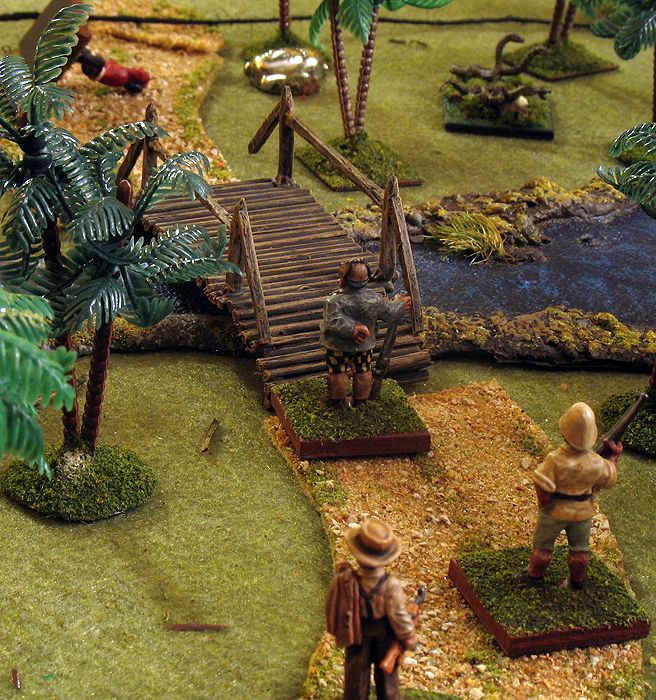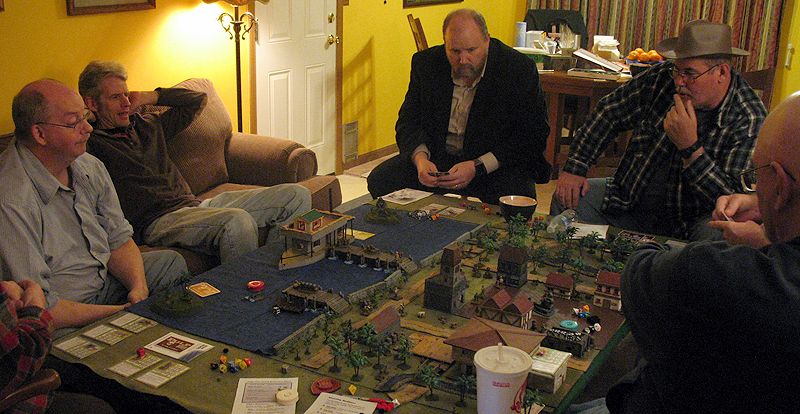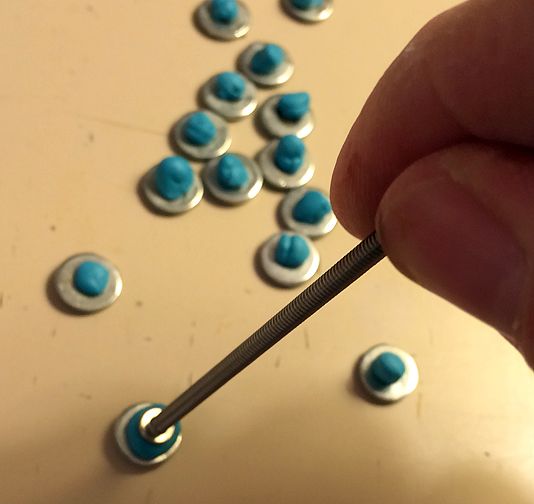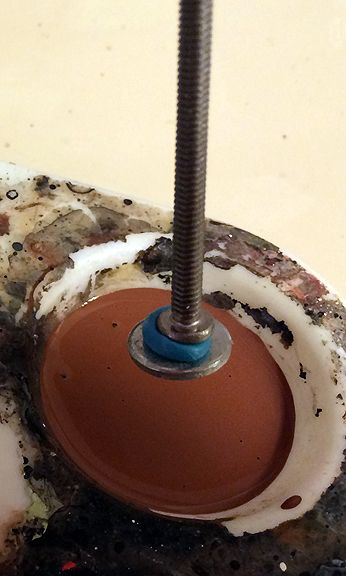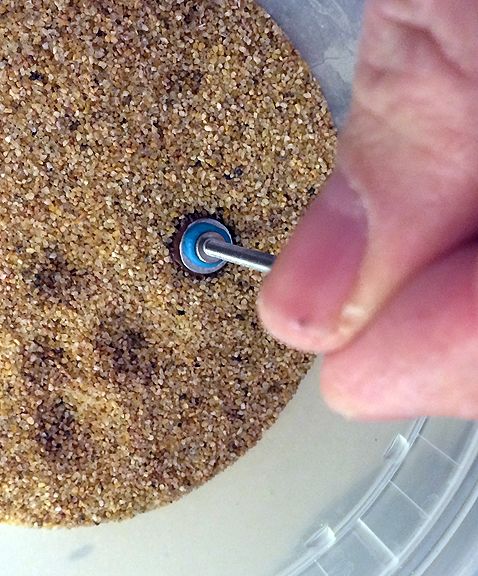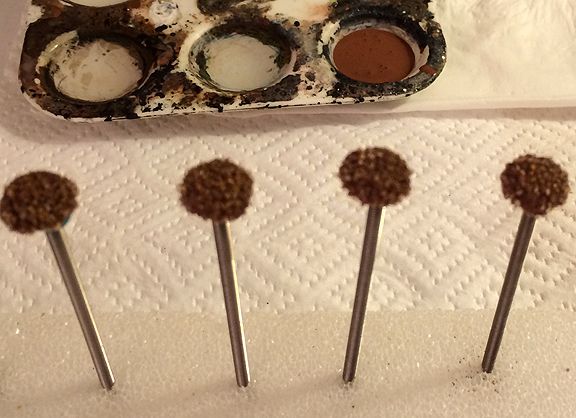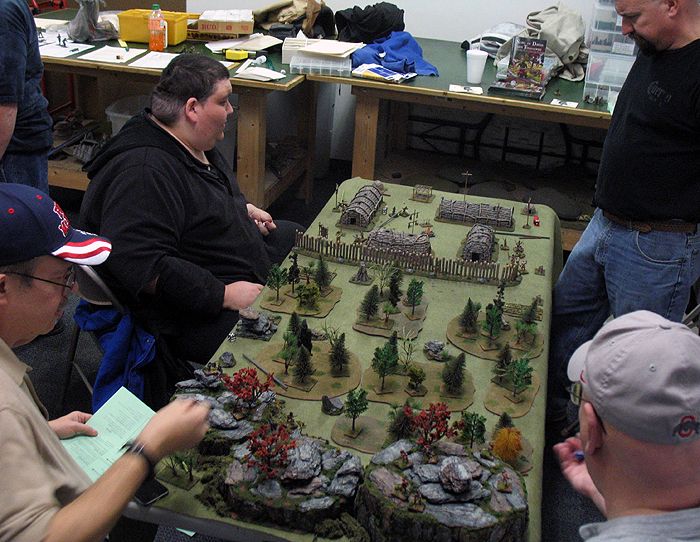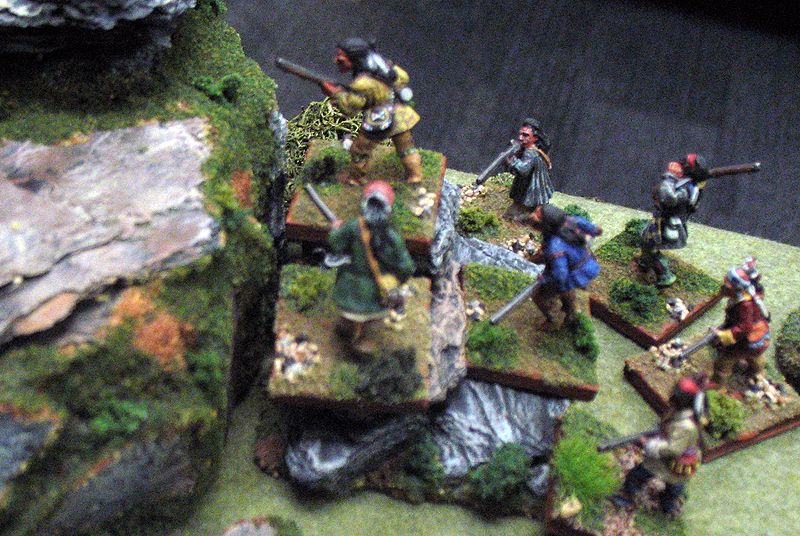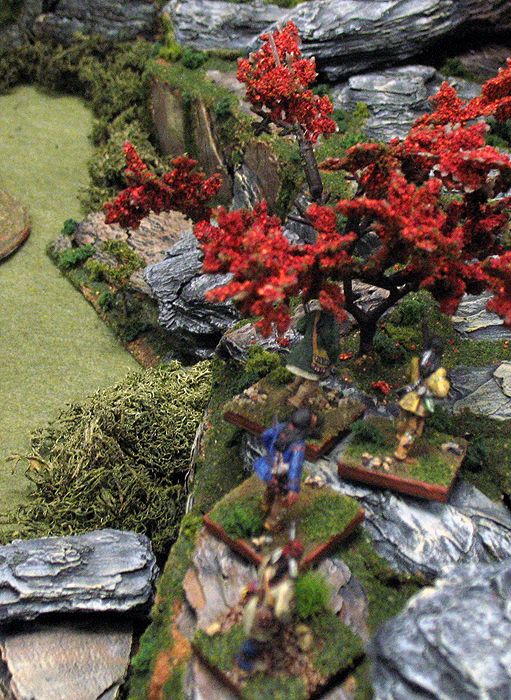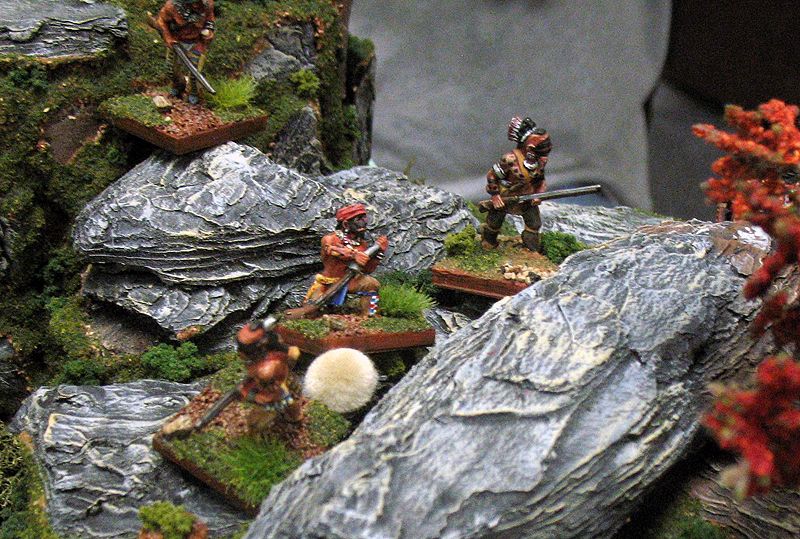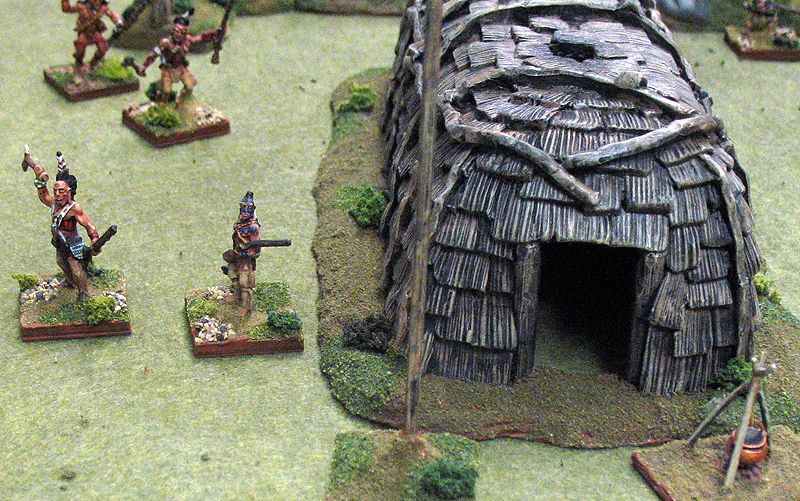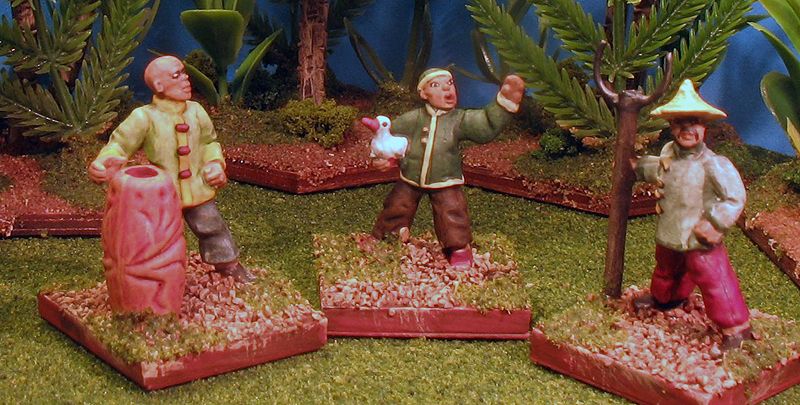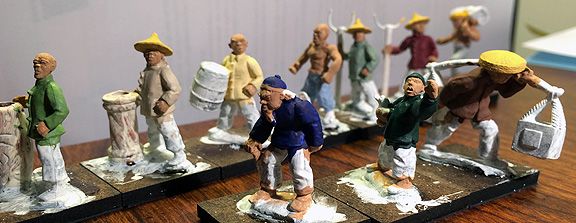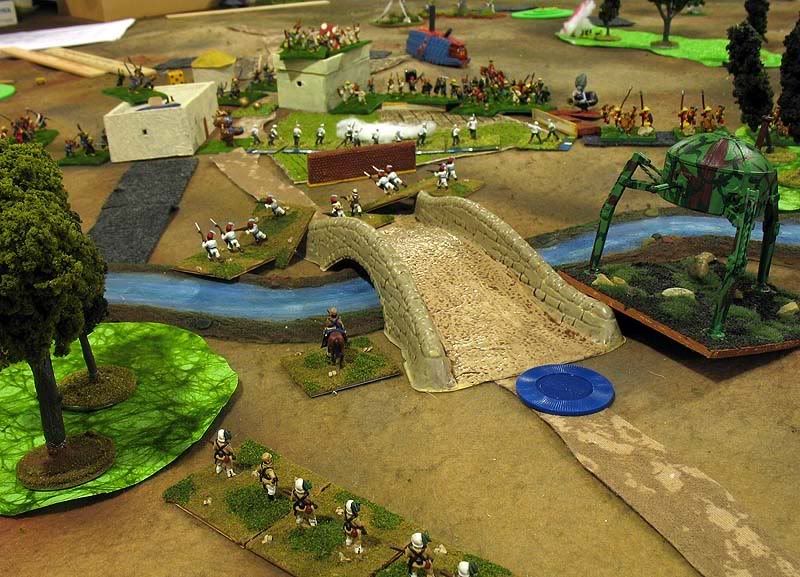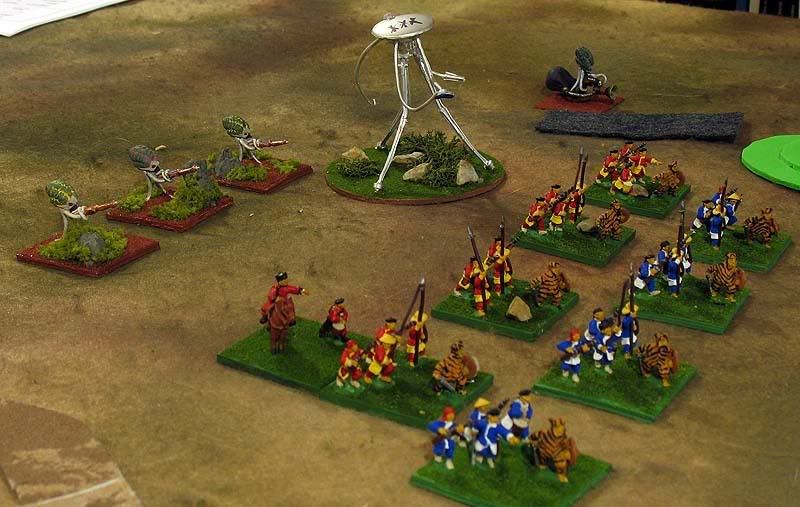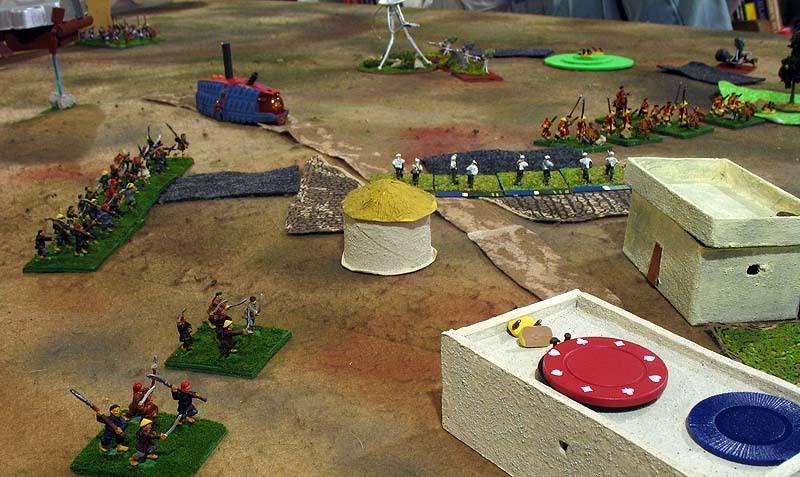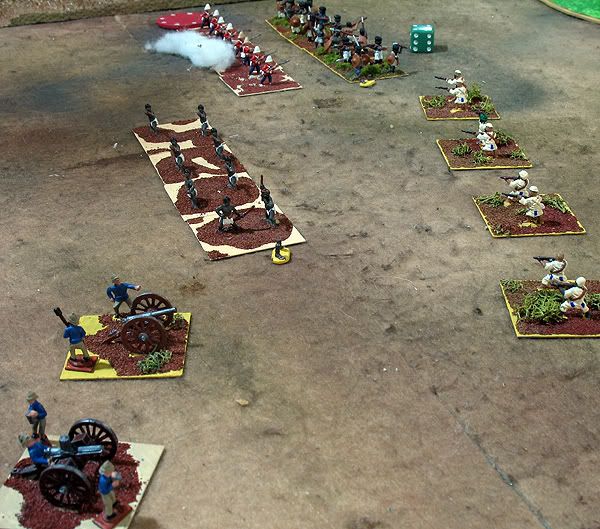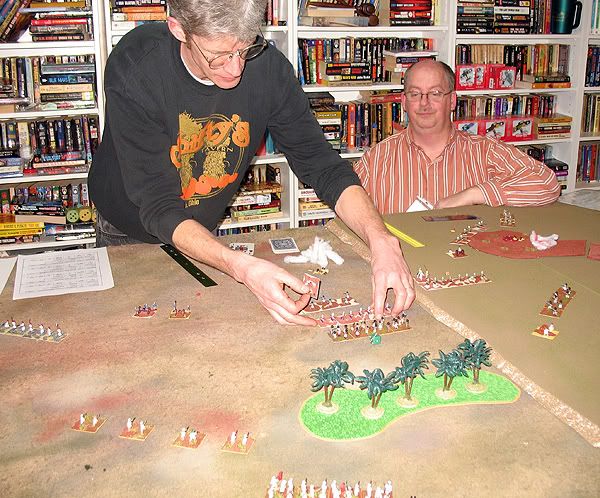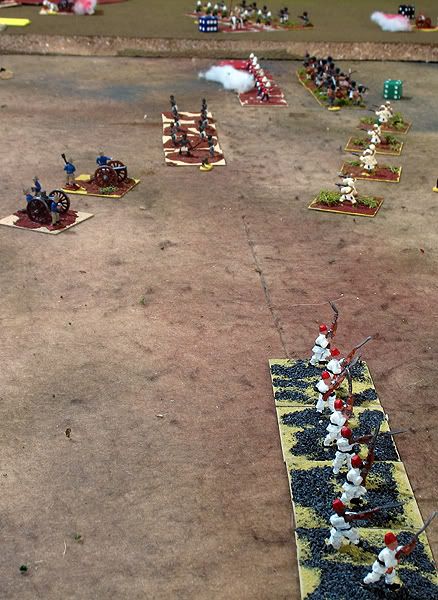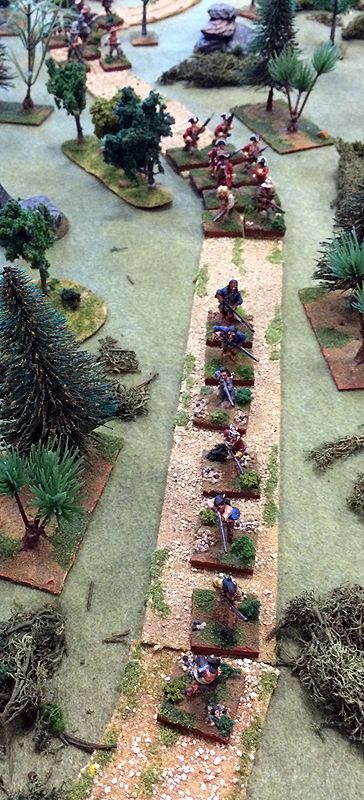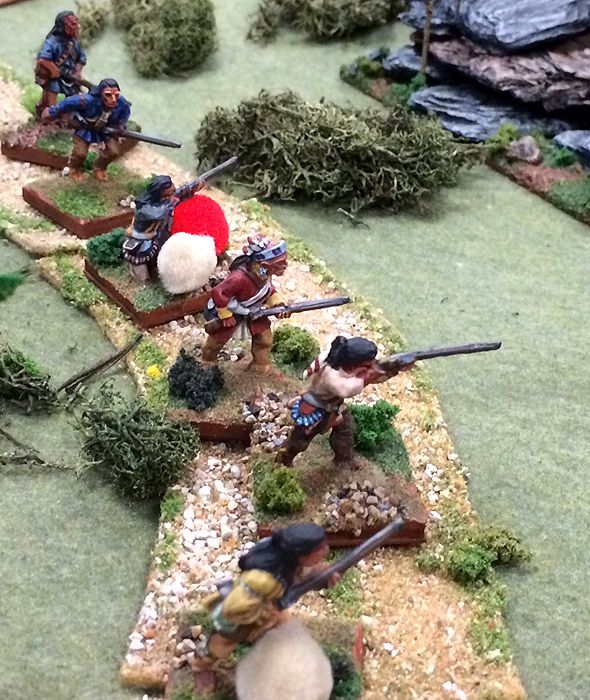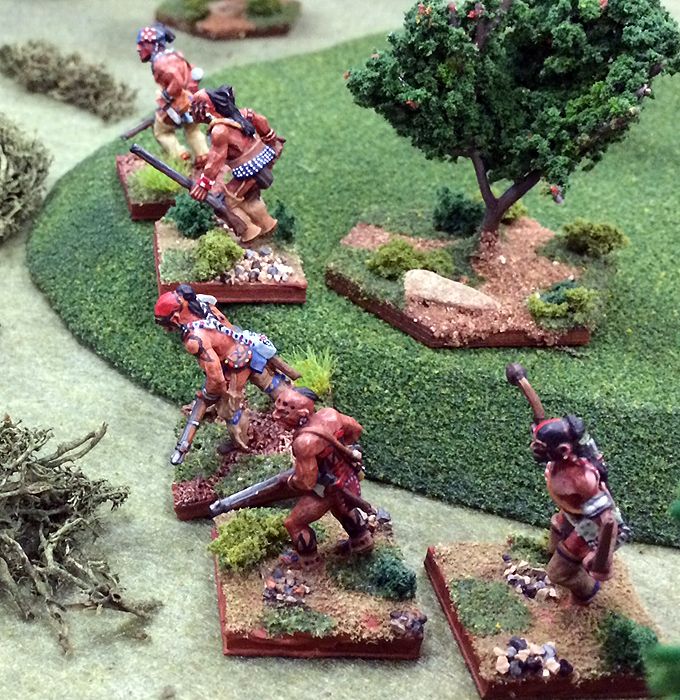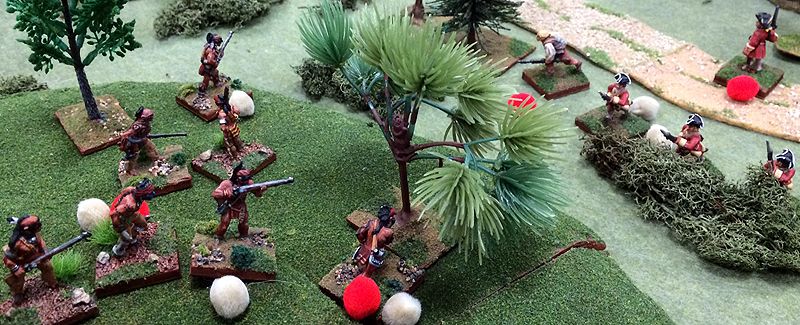Dakota is not so naive to think he will get on board the freighter without a scrap. First, the French authorities -- represented by Inspector of Antiquities Pierre Fournereau -- don't want such a valuable artifact to leave French territory. Next, the British and Irish archeological teams may want to seize it for themselves. Plus, Dakota knows that it has been too long since his arch-rival, the German archeologist Von Jaeger has reared his ugly head. And finally, perhaps most dangerous, the Order of the Fire Coral has been dogging his footsteps since he arrived in Indochina. To think they would not make one last attempt to recover the Buddhist artifact would be hopelessly optimistic. Masters of disguise, they could be anywhere in Hoi An.
His good friend Harold Fortwine grunted and point to the far jungle. The black smoke of an approaching steamer could be seen rising above the treeline. Chairs scraped as Dakota and his companions headed for the door. It was now or never. As Dakota Smith and his companions left the customs house on the town square of Hoi An, Dakota grumbled, "I got a bad feeling about this. Harold, Dolly, keep a sharp eye out!" All around them, the river port bustled with activity. Coolies were on the wharf loading and unloading the freighter. Dakota saw their baggage among the items being carried aboard on the backs of the IndoChinese laborers. He patted his satchel which contained the prize from this expedition. The famed Buddhist relic, "The Tears of the Buddha" -- which legend said had magical powers.
Shouting on the pier drew the Americans' attention. The freighter's bosun was cursing mightily at two of the coolies who had apparently dashed their loads to the dock and stood glaring and pointing at the Americans. With a sinuous movement, they whipped off their peasant garb and assumed a fighting crouch. "Uh-oh," Dakota muttered as he noted the red and black uniforms they had been wearing underneath -- the unmistakable gear of the Order of the Fire Coral.
Dakota dashed for the cover of a line of wooden barrels beneath the harbor master's wooden observation tower. Dolly walked determinedly towards the pier when she saw one of the agents kick her luggage into the water and laugh. "Dolly, no!" Dakota shouted, unholstering his pistol. As he took careful aim at the agents on the pier, he caught movement out of the corner of his eye. A warning shout from Harold Fortwine, made him turn. Chuckling and cracking their knuckles, three more agents walked out of the door of the customs house. He recognized the bald, muscled Tat Ko and the masked female, Jazh Minh. "This could be bad..." he called over to Harold.
The hairs on Dakota's neck rose up when he a familiar voice call out, "I'm afraid, my dear Dakota, it is about to get much worse..." The American whirled and saw creeping up behind them Von Jaeger, his stooge Otto Tulmann, and the evil old with Fraulein Blucher. "Harold! Dolly!" he yelled. "We're surrounded...make a break for it!" Jazh Minh and one of the Fire Coral agents rushed him and he fired off shots quickly. He heard Harold cursing as he jabbed and boxed with Tat Ko. There was a blaze of gunfire from the Germans and he heard Dolly cry out and a thud as she fell hard at the foot fo the docks. There was nothing Dakota could do for her as he dodged the kicks and punches of the martial artists.
Dakota grimaced as Jazh Minh vaulted away, thinking "That wench's kicks hurt!" With no martial artists in his face, he turned to face the Germans...too late! Both Von Jaeger and Otto Tulmann opened fire. Dakota felt a searing pain and fell to the dirt. That jarred his wounds even harder and he blacked out. His last thought was for the Tears of the Budhha. Had it gone flying out of his satchel when he spun to the ground? Meanwhile, Harold was holding his own, bludgeoning Tat Ko with his boxing skills. Dolly, though, also in a heap near the pier. Fraulein Blucher growled in disdain as she saw Jazh Minh somersault backwards and landing on her feet. She rushed the martial artist, ignoring Von Jaeger's warning. Just as she began her roundhouse swing, Jazh Minh's foot connected with the bridge of her nose. The gray haired matron collapsed.
There was a gasp among the archeologists and the agents of the Fire Coral as the Tears of the Buddha flew from Dakota's satchel and landed several feet away from his unmoving form. One of the agents dashed in and picked it up. He was gunned down by Von Jaeger and again the Buddha went flying. Tat Ko rushed over and with Neen Wa stood over it and dared the Westerners to make a move towards it. Surprisingly, Von Jaeger nor his goons never tried to grab it. Instead, the were venting their anger on Dakota and Harold, blazing away at them and ignoring the Fire Coral. The Irish and British teams were closing in, but they also seemed leery of making a run at it.
Meanwhile the Irish and British teams were creeping stealthily through the town square towards the pier. Despite previous bad blood, they ignored each other for the most part this game. Both had valid chances to make a grab for the other's minor plot point (they could recognize it by passing two Cunning checks when within 12"). Neither took it. The Irish did close in on the French who were slinking down the road towards the freighter. They joined Otto Tulmann in blazing away at Pierre Fournereau and Dr. Lambert, who was carrying the French artifact. The French fire was accurate, though, and they gave better than they received.
Surprised at their luck to be ignored by the Germans, Tat Ko nodded at Neen Wa to pick up the Tears of the Buddha and make a dash for it. Tat Ko charged the British Maj. Speke-Eastman who blocked the path leading over the bridge and into the jungle. Neen Wa took advantage of the distraction and raced over the bridge, stowing the idol in his robes.
Neen Wa's flight wasn't unobserved, though. Harris McLeod, the portly representative of the British Museum tut-tutted to himself. "Now, here, laddie. We can nae have yee fleeing with such a prize, can we?" The Scottish laird lined up the fleeing agent in his sites and squeeze the triggers of both barrels of his gun. There was a cry and a flash of silver as the idol flew from Neen Wa's lifeless body and tumbled into the jungle. Moving faster than you'd think possible, Harris followed the path of his fatal shot.
Harris heard footsteps behind him on the bridge as he pounded towards the Tears of the Buddha, which he could see glinting from beneath a swaying fern. He hoped that it was Speke-Eastman behind him, and sneaked a glance over his shoulder to see. An evil hiss in front of him froze him. Swaying above the idol was the hooded body of a cobra, who's nest must have been disturbed the idol's tumble through the vegetation. "Och, good god!" Harris yelped, then swung the barrel of his rifle over his head and pounded the snake into the jungle floor. Reaching tenderly for it, he confirmed the cobra was dead before picking up the gleaming artifact.
And so, Dakota Smith's Oriental Adventures first story arc comes to an end. It was quite the adventure and the players seemed to really enjoy it. Each league seemed to have its moment in the sun. Would Harold be able to gather the wounded Dakota and Dolly and nurse them back to health? Would the Americans return empty-handed to Portland, Oregon? Or are there more adventures to be had in French Indochina? After all, only the French Dr. Lambert was on board the freighter when it sailed from Hoi An. The others would all need to find a different way home...
Thanks to Pulp Alley for making our games such a blast! I highly recommend these rules as they seem to create an exciting storyline just in the playing.

